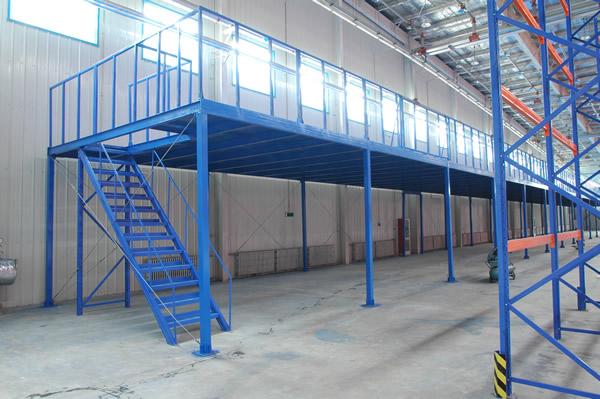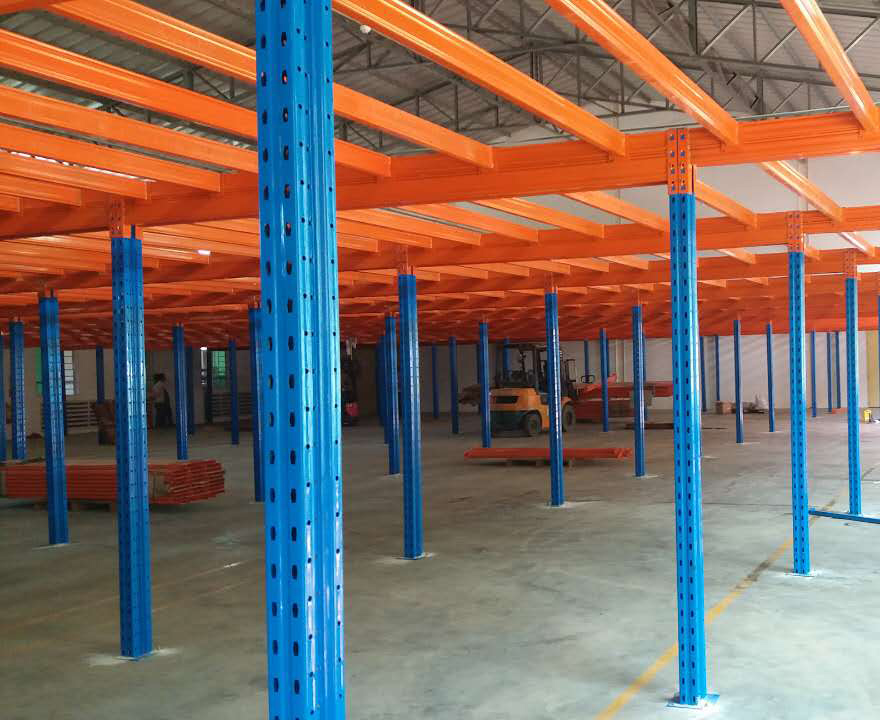In the world of warehouse management and industrial storage, efficiency is paramount. One of the most critical components in achieving this efficiency is the use of pallet racking bays. These structures form the backbone of many storage systems, allowing businesses to maximize space, improve inventory management, and streamline operations. But what exactly are pallet racking bays, and why are they so essential? This article delves into the core aspects of pallet racking bays, providing a comprehensive overview that covers their definition, types, benefits, design considerations, installation, maintenance, and more. By understanding these elements, you can make informed decisions to optimize your storage solutions and enhance productivity.
Pallet racking bays refer to the individual sections or units within a larger racking system that are designed to hold palletized loads. Each bay typically consists of vertical frames, horizontal beams, and sometimes additional components like wire mesh or safety bars. These bays are configured to create aisles for access, making them a versatile choice for various industries, from retail to manufacturing. The strategic use of pallet racking bays can transform a cluttered warehouse into an organized, high-capacity storage facility. As we explore the different facets of pallet racking bays, you'll gain insights into how they can be tailored to meet specific needs, ensuring that your storage system is both functional and cost-effective.

Pallet racking bays are the fundamental building blocks of pallet racking systems, which are widely used in warehouses and distribution centers. Each bay is a designated space that can accommodate one or more pallets, typically arranged in rows and columns to form a cohesive storage structure. The basic anatomy of a pallet racking bay includes upright frames—which are the vertical supports—and beams that connect these frames horizontally to create shelves. The dimensions of a pallet racking bay can vary based on the load requirements, pallet sizes, and available space. For instance, a standard pallet racking bay might be designed to handle loads up to several thousand pounds, with adjustable beam levels to accommodate different product heights.
The primary purpose of pallet racking bays is to facilitate efficient storage and retrieval of goods. By organizing inventory in a systematic manner, these bays reduce the time and effort needed for picking and restocking. They are commonly used in selective racking systems, where each pallet is accessible individually, but they can also be integrated into more complex setups like drive-in or push-back racking. The flexibility of pallet racking bays allows for customization based on factors such as inventory turnover rates and the types of products stored. In essence, pallet racking bays serve as the core units that enable warehouses to scale their operations while maintaining order and safety. Understanding the basics of pallet racking bays is the first step toward leveraging their full potential in any storage environment.

When it comes to pallet racking bays, there isn't a one-size-fits-all solution. Different types of pallet racking bays are available to suit various storage needs and operational requirements. The most common types include selective pallet racking bays, drive-in pallet racking bays, push-back pallet racking bays, and pallet flow racking bays. Each type offers unique advantages and is suited for specific applications, making it crucial to choose the right one for your warehouse.
Selective pallet racking bays are the most widely used variant, providing direct access to every pallet. This makes them ideal for warehouses with a high variety of SKUs and frequent inventory turnover. Each pallet racking bay in this system is independent, allowing forklifts to navigate aisles easily. Drive-in pallet racking bays, on the other hand, are designed for high-density storage by eliminating aisles between rows. In this setup, pallet racking bays are arranged in a way that forklifts drive directly into the rack structure to place or retrieve loads, making it suitable for storing large quantities of similar products. Push-back pallet racking bays utilize a last-in, first-out (LIFO) system, where pallets are stored on nested carts that push back as new loads are added. This type of pallet racking bays is excellent for maximizing space while maintaining some selectivity. Lastly, pallet flow racking bays incorporate a gravity-fed system that allows pallets to move from the loading to the picking face, ideal for high-throughput operations with first-in, first-out (FIFO) inventory management. By evaluating the characteristics of each type, you can select pallet racking bays that align with your storage goals and operational workflow.
Implementing pallet racking bays in a warehouse offers numerous benefits that contribute to overall efficiency and cost savings. One of the primary advantages is the optimization of vertical space. Pallet racking bays allow businesses to store goods upward, making use of the full height of the facility. This reduces the footprint required for storage and can lead to significant savings in real estate costs. Additionally, pallet racking bays enhance organization by providing a structured layout for inventory. This minimizes the risk of misplacement and speeds up order fulfillment processes.
Another key benefit is the improved accessibility and selectivity offered by pallet racking bays. In selective systems, each pallet is easily reachable, which is crucial for operations with high product variety. This accessibility also contributes to better inventory control, as staff can quickly conduct counts and audits. Safety is another area where pallet racking bays excel. When properly installed and maintained, these systems reduce the likelihood of accidents such as collapses or falls, thanks to features like load-bearing capacities and integrated safety components. Moreover, pallet racking bays are highly scalable and adaptable. As business needs change, the configuration of pallet racking bays can be modified to accommodate new products or increased volumes. This flexibility ensures that your storage system remains relevant and effective over time. Overall, the use of pallet racking bays leads to a more productive, safe, and organized warehouse environment, directly impacting the bottom line.
Designing pallet racking bays requires careful consideration of several factors to ensure they meet specific storage demands. The first step is to assess the available space, including ceiling height, floor dimensions, and aisle widths. This assessment helps determine the optimal layout for pallet racking bays, whether in a single-deep or double-deep arrangement. Single-deep pallet racking bays provide access from one side, while double-deep setups allow for higher density but require specialized equipment for retrieval. The load capacity is another critical aspect; each pallet racking bay must be designed to support the weight of the stored goods, factoring in potential dynamic loads from forklifts.
The configuration of pallet racking bays also involves selecting the right components, such as beam levels, frame sizes, and accessories like decking or row spacers. For instance, adjustable beams allow for customization of shelf heights, making pallet racking bays versatile for various product sizes. It's essential to consider the flow of operations when designing pallet racking bays. This includes planning for traffic patterns, picking zones, and integration with other warehouse systems. Software tools and professional consultations can aid in creating a detailed layout that maximizes the efficiency of pallet racking bays. Additionally, compliance with industry standards and regulations is crucial to ensure safety and durability. By investing time in the design phase, you can create pallet racking bays that not only store goods effectively but also enhance overall workflow and reduce long-term costs.
Proper installation of pallet racking bays is vital for their performance and safety. The process typically begins with site preparation, including floor leveling and marking out the positions for each pallet racking bay. It's recommended to engage experienced installers who follow manufacturer guidelines and local building codes. During installation, components like upright frames and beams are assembled securely, often using bolts or locking mechanisms to prevent dislodgement. Once the pallet racking bays are in place, load tests may be conducted to verify stability.
Safety is a paramount concern when dealing with pallet racking bays. Regular inspections should be performed to check for damage, such as bent beams or loose connections, which could compromise integrity. Key safety measures include ensuring that loads do not exceed the rated capacity of the pallet racking bays and that pallets are properly positioned on beams. Additionally, installing protective features like guard rails or post protectors can prevent accidents from forklift impacts. Training staff on correct usage and safety protocols is also essential; this includes guidelines for loading and unloading pallets in the pallet racking bays. By adhering to these practices, businesses can minimize risks and extend the lifespan of their pallet racking bays, ensuring a safe working environment for all employees.
Maintaining pallet racking bays is crucial for ensuring their longevity and operational efficiency. Routine maintenance involves visual inspections for signs of wear, corrosion, or damage, as well as checking for any misalignments in the structure. It's advisable to schedule formal audits at least annually, focusing on the integrity of beams, frames, and connectors in the pallet racking bays. Cleaning the areas around pallet racking bays can prevent debris accumulation, which might lead to hazards or reduced accessibility.
Optimization of pallet racking bays goes beyond maintenance and involves fine-tuning the system for better performance. This can include reconfiguring the layout to improve space utilization or upgrading components to handle heavier loads. For example, adding cross-bracing or reinforcement kits can enhance the stability of pallet racking bays. Another optimization strategy is to implement inventory management technologies, such as barcode scanners or RFID systems, which integrate seamlessly with pallet racking bays to track stock levels and movements. By continuously monitoring and adjusting the pallet racking bays, businesses can adapt to changing demands and maximize their return on investment. This proactive approach ensures that the pallet racking bays remain a reliable asset in the warehouse ecosystem.
In conclusion, pallet racking bays are indispensable elements in modern storage systems, offering versatility, efficiency, and safety. From their basic definition to the various types, benefits, design considerations, installation, and maintenance, each aspect highlights the importance of these structures in warehouse management. By carefully planning and implementing pallet racking bays, businesses can achieve significant improvements in storage capacity and operational workflow. As industries evolve, the role of pallet racking bays will continue to be central in driving productivity and organization.
Q1: What are the standard dimensions for pallet racking bays?
A1: The standard dimensions for pallet racking bays vary based on factors like pallet size and load requirements, but a typical bay might range from 8 to 12 feet in height, 3 to 4 feet in width, and 2 to 4 feet in depth. It's essential to customize pallet racking bays to fit specific warehouse layouts and product dimensions for optimal efficiency.
Q2: How do I determine the load capacity needed for my pallet racking bays?
A2: To determine the load capacity for your pallet racking bays, consider the weight of the heaviest palletized loads, including any dynamic forces from handling equipment. Consult with engineering standards or professionals to ensure that the pallet racking bays are rated appropriately, and always factor in safety margins to prevent overloading.
Q3: Can pallet racking bays be reconfigured if my storage needs change?
A3: Yes, pallet racking bays are highly reconfigurable due to their modular design. Components like beams and frames can often be adjusted or relocated to accommodate changes in inventory size or volume, making pallet racking bays a flexible solution for evolving business requirements.
Q4: What safety features should I include in my pallet racking bays?
A4: Key safety features for pallet racking bays include load capacity labels, beam locks, guard rails, and post protectors. Regular inspections and employee training on proper usage are also critical to maintain a safe environment around pallet racking bays.
Q5: How often should I inspect and maintain my pallet racking bays?
A5: It's recommended to inspect pallet racking bays visually on a monthly basis and conduct a thorough professional audit at least once a year. Maintenance frequency may increase in high-traffic environments to address wear and tear promptly, ensuring the longevity and safety of your pallet racking bays.
 Wechat
Wechat
 Whatsapp
Whatsapp